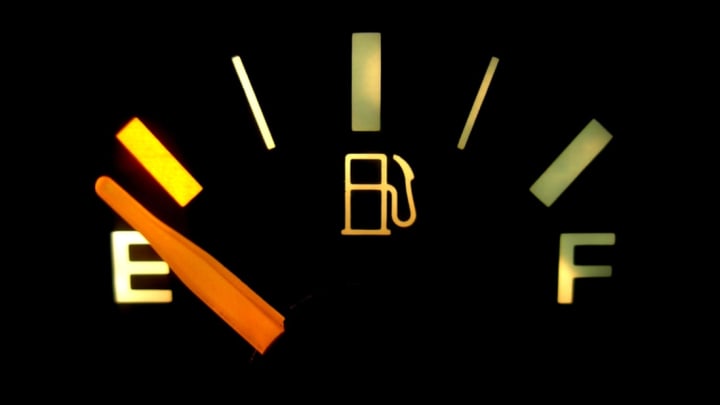A car’s fuel indicator light warns us when it’s time to fill up, but how far can you push your luck before your car is really out of fuel—and should you? The amount of leeway you have depends on a car’s make and model, but according to Jalopnik, tempting fate this way could wear down your vehicle.
Gasoline makes its way from the tank to the engine via your car's fuel pump. When you fill up your tank, gas enters the fuel pump through a part called the strainer, and moves through another round pump before finally entering the electric pump motor to cool its copper windings.
When your car’s out of fuel, air cools the windings, instead of gas. Unfortunately, air doesn’t work as well as flowing gas does. This means that your fuel pump electric motor might overheat, causing its windings to melt, eventually damaging the device. In addition to cooling the pump electric motor, fuel also keeps its rotating parts lubricated, which prevents premature wear.
Running a car low on fuel can cause even more harm to your vehicle by dredging up collected sediment from the tank’s bottom. When that happens, older vehicles that siphon fuel through the bottom face a clogged fuel filter. Once this occurs, it can become difficult to run the car, as not enough fuel is making it to the engine. And as the fuel flow rate slows, the electric pump motor might overheat.
In short, it’s bad for your car when you don’t hit up the gas station on a regular basis—and the savings you’ve gained from “running on fumes” probably isn't enough to justify a ruined fuel pump. So while driving, pay attention to the dashboard and pull over when you see that telltale blinking light. Your vehicle and your wallet will thank you.
[h/t Jalopnik]
